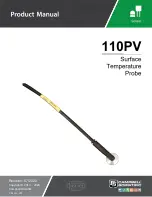
VSM Pro User Guide
28
Chapter 5
Working with Video Maps
Overview
Since the inception of intelligent color-changing LED lighting systems, most controllers have used
the DMX512 protocol to control the nodes in an installation. The DMX control scheme is
straightforward: each node receives three sequential channels of data, one channel each for the
colors red, green, and blue. For example, the first node listens to channels 1, 2, and 3; the
second node listens to channels 4, 5, and 6; and so on.
DMX is a viable solution for small and medium-scale LED lighting installations, or installations
displaying the same abstract visual effects simultaneously on all components. However, one DMX
universe comprises only 512 channels, which can control a total of 170 nodes. Output to only
170 nodes is insufficient for video display.
To display video images, LED-based displays require thousands of individually controllable nodes.
VSM Pro manages large-scale lighting systems via Ethernet control. Ethernet frees a controller to
use video maps instead of DMX channels.
What are Video Maps?
Video maps are created using VMT mapping software, which is included with VSM Pro. Maps
enable VSM Pro to accurately send data to each node in an installation, up to 250,000 total
nodes. A map functions by assigning each node in the installation to a pixel of source video.
















































